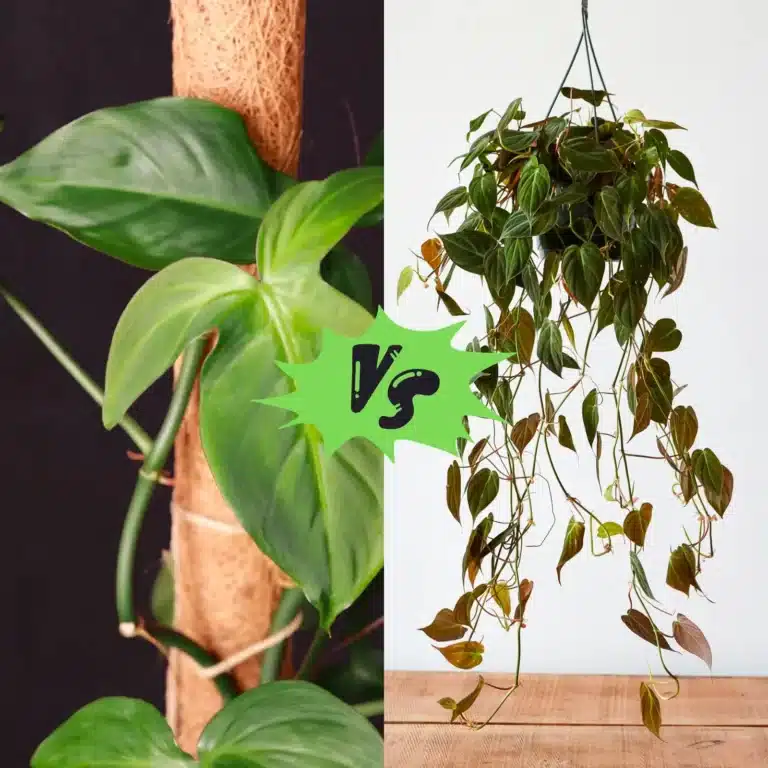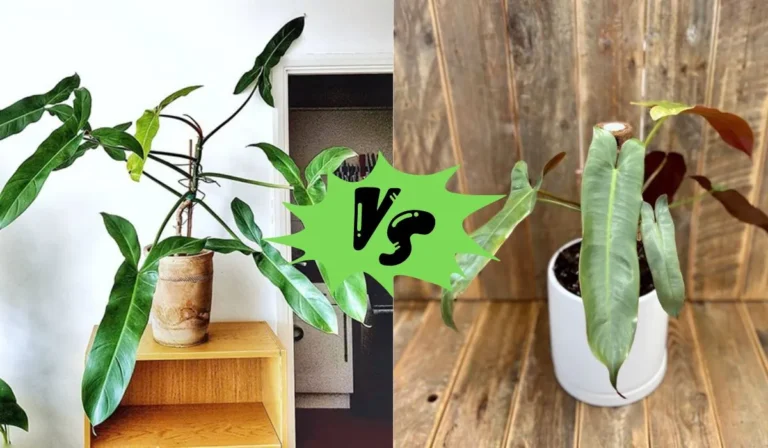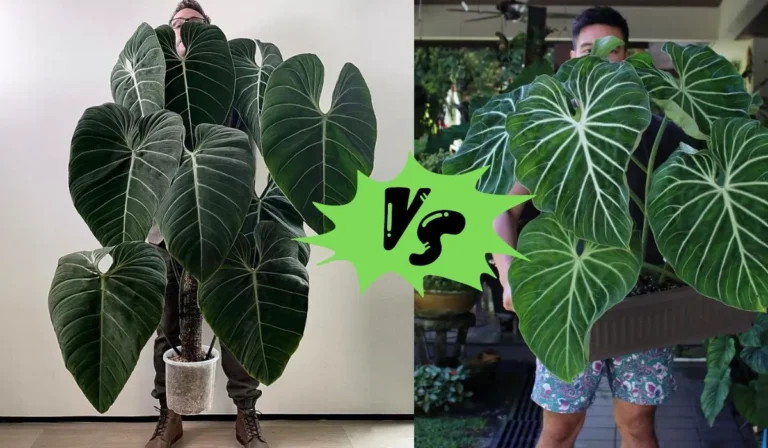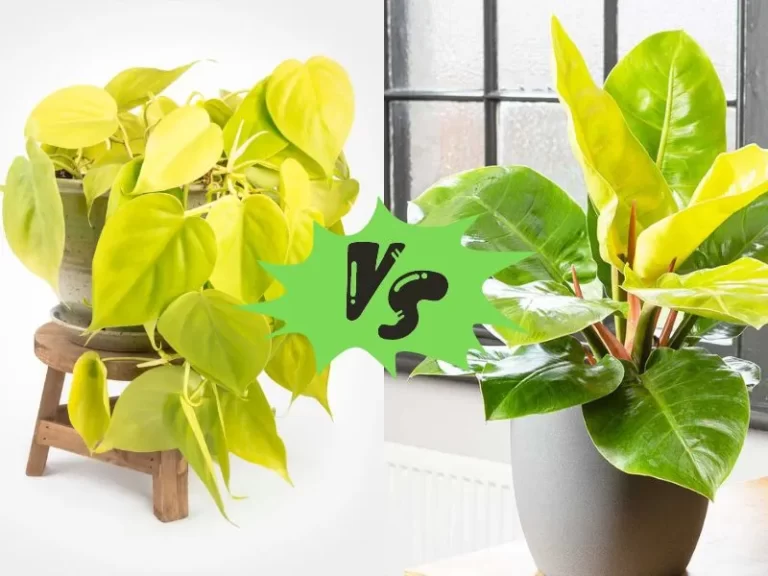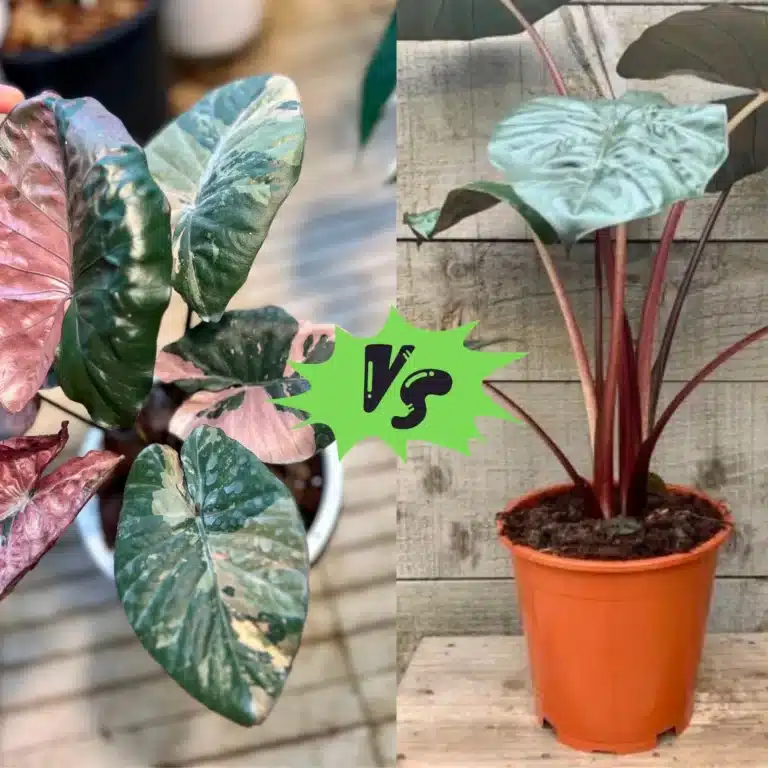Philodendron Shangri La vs Xanadu: Which is the Best Indoor Plant for You?
Philodendrons, popular indoor plants, are known for their lush foliage and easy care. Two common varieties, Philodendron Shangri La and Philodendron Xanadu, differ in appearance and growth.
In this article, we’ll compare these varieties to help you choose the right one for your collection and provide care tips.
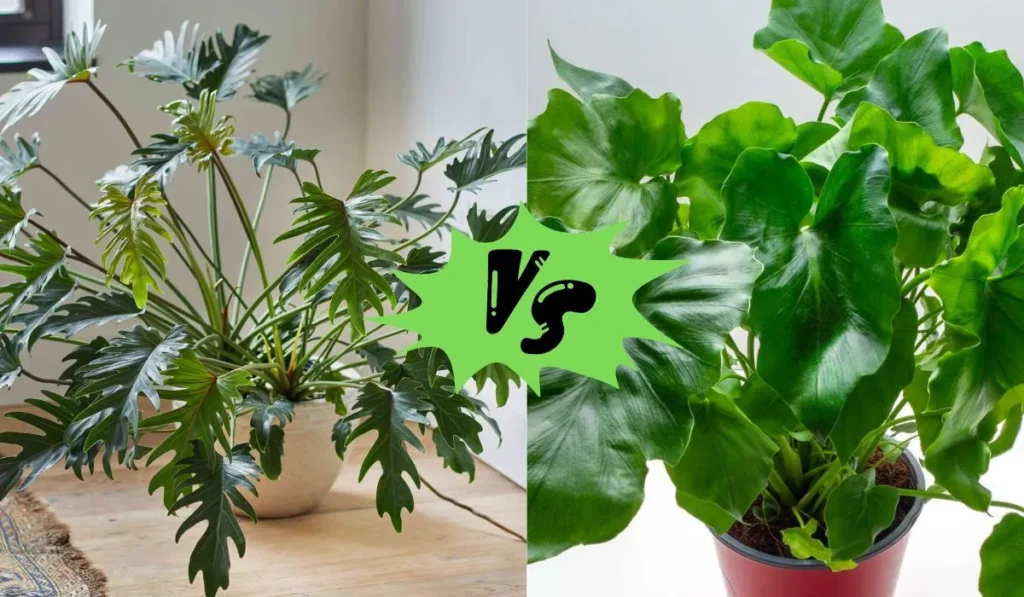
Key Takeaways
- Philodendron Shangri La has larger, more deeply lobed leaves and tends to grow taller and wider than Xanadu.
- Philodendron Xanadu is more compact and better suited for smaller spaces or plant collections.
- Both plants are relatively easy to care for, but have slightly different needs in terms of watering, light, and soil.
Philodendron Shangri La vs Xanadu
If you’re a plant lover, you’ve probably heard of Philodendron Shangri La and Xanadu, two popular houseplants that are often compared to each other. In this section, we’ll take a closer look at the differences between these two plants.
Overview
Philodendron Shangri La and Xanadu are both members of the Araceae family, which includes many other popular houseplants like Monstera and Peace Lily.
These two plants are known for their large leaves and easy-to-care-for nature, making them a favorite among houseplant enthusiasts.
Appearance
One of the main differences between these two plants is their appearance. Philodendron Shangri La has large, deeply lobed leaves that are jagged around the edges, giving it the common name of split-leaf philodendron.
On the other hand, Philodendron Xanadu has flatter, less wavy leaves that take up more width to show off its smoothly lobed leaves.
Growth and Care
Both Shangri La and Xanadu are relatively easy to care for and grow. They prefer bright, indirect light and moist, well-draining soil. However, Shangri La prefers to be more compact and likes to be root-bound, while Xanadu prefers to spread out and take up more space.
When it comes to watering, both plants should be watered when the top inch of soil feels dry to the touch. Overwatering can lead to root rot, while underwatering can cause the leaves to wilt and turn yellow.
Ideal Conditions
Philodendron Shangri La and Xanadu prefer warm, humid environments. They thrive in temperatures between 65-80°F and humidity levels between 40-60%. To increase humidity levels, you can mist the leaves with water or use a humidifier.
Common Problems
Like all plants, Philodendron Shangri La and Xanadu can be susceptible to pests and diseases. Some common problems include spider mites, mealybugs, and root rot.
To prevent these issues, make sure to keep the plants in ideal conditions and inspect them regularly for any signs of pests or disease.
What Are the Key Differences?

If you’re a plant enthusiast, you might be wondering what the differences are between Philodendron Shangri La and Xanadu. Both plants are part of the Araceae family and are popular indoor plants.
While they might look similar at first glance, there are a few key differences between the two plants that you should know about.
Size
One of the most noticeable differences between Philodendron Shangri La and Xanadu is their size. Shangri La is a compact plant that grows up to 3 feet tall and 3 to 4 feet wide.
On the other hand, Xanadu tends to grow outward rather than upward, reaching a maximum width of 3 to 4 feet and a maximum height of 2 to 4 feet.
Leaves
Another difference between these two plants is the shape and texture of their leaves. Shangri La has large, deeply lobed leaves that give it a bushy appearance.
The leaves are also glossy and have a waxy texture. Xanadu, on the other hand, has flatter, less wavy leaves that are more smooth and lobed.
Growth Habit
The growth habit of these two plants is also different. Shangri La tends to grow more upright and bushy, while Xanadu grows more outward and has a more open growth habit.
Care
When it comes to care, both plants are relatively easy to care for. They both prefer bright, indirect light and well-draining soil.
However, Shangri La is more tolerant of lower light conditions than Xanadu. Additionally, Xanadu is more susceptible to root rot, so it’s important not to overwater it.
In my personal experience, I have found that both plants are great options for indoor spaces. Shangri La is perfect for smaller spaces due to its compact size, while Xanadu is a great option for larger spaces where it can spread out. Both plants are relatively easy to care for, making them ideal for beginners.
Which One is Easier to Care For?
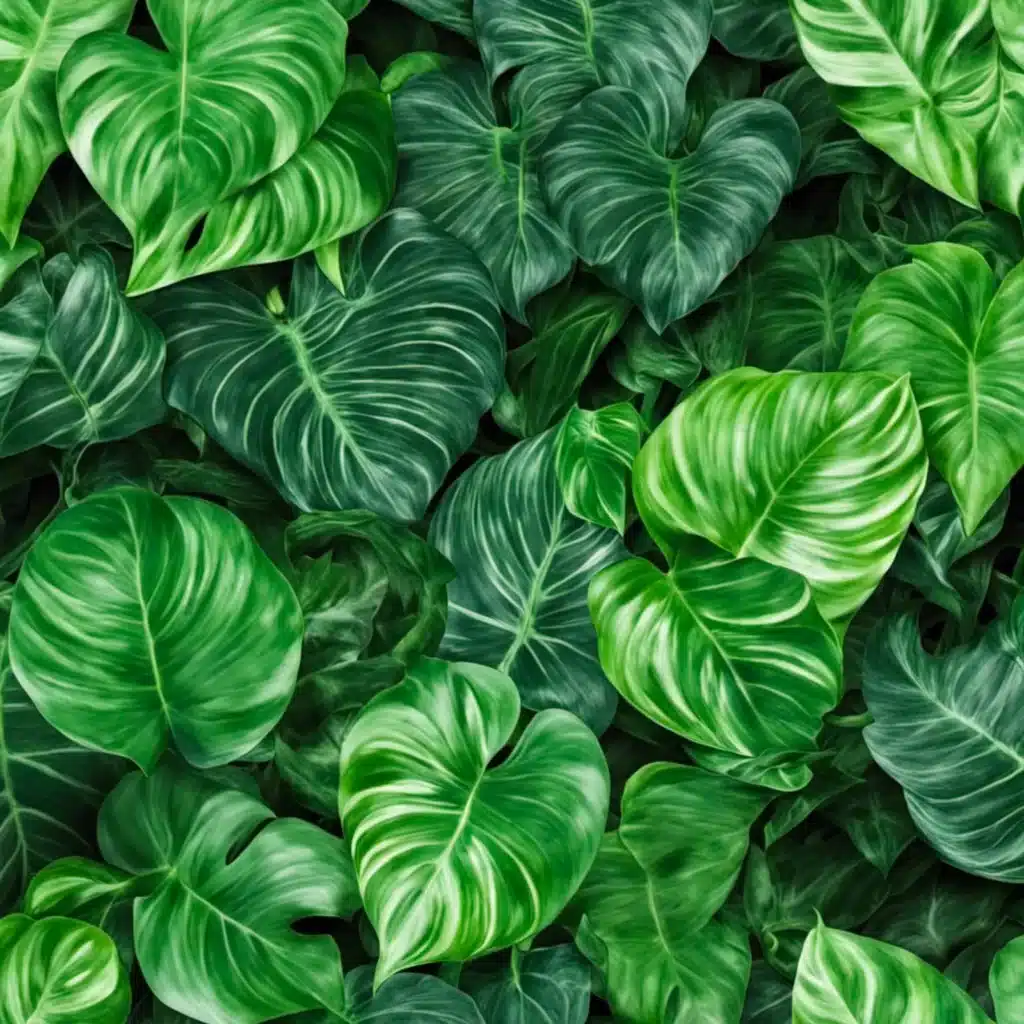
When it comes to caring for houseplants, it’s important to choose a plant that fits your lifestyle and environment. Both Philodendron Shangri La and Xanadu are relatively easy to care for, but there are some differences to consider.
Watering
One of the most important aspects of caring for any plant is watering. Both Shangri La and Xanadu prefer moist soil, but overwatering can lead to root rot. It’s important to strike a balance between keeping the soil moist and not allowing it to become waterlogged.
Light
Philodendron Shangri La and Xanadu both prefer bright, indirect light. They can tolerate lower light conditions, but their growth may be slower.
If you notice your plant becoming leggy or stretching towards the light, it may be an indication that it needs more light.
Temperature and Humidity
Both Shangri La and Xanadu prefer warm, humid environments. They can tolerate a range of temperatures, but it’s best to keep them away from drafts and extreme temperature fluctuations.
Maintenance
Both plants require minimal maintenance, but there are some differences to consider. Shangri La tends to be a more compact plant, while Xanadu can grow quite large. This means that Xanadu may require more pruning to keep it in check.
Which One is More Popular?
When it comes to Philodendrons, both Shangri La and Xanadu are quite popular. However, if you were to pick one, Xanadu would be the more popular choice. Here’s why:
- Availability: Xanadu is more widely available in nurseries and garden centers than Shangri La. This makes it easier for people to get their hands on a Xanadu plant.
- Ease of Care: Xanadu is easier to care for than Shangri La. It can tolerate a wider range of light conditions, and is more forgiving when it comes to watering. This makes it a great choice for beginners or those who don’t have a lot of time to devote to plant care.
- Aesthetics: Xanadu has a more unique and eye-catching appearance than Shangri La. Its leaves are flatter and less wavy, giving it a smoother and more modern look. It also takes up more width to show off its smoothly lobed leaves, making it a great choice for filling up empty spaces in a room.
That being said, Shangri La is still a great choice for those who want a more compact and bushy plant. It has large, deeply lobed leaves that give it a lush and tropical appearance. It’s also great for small spaces or as a tabletop plant.
Ultimately, the choice between Shangri La and Xanadu comes down to personal preference and the specific needs of your space. Both plants are beautiful and easy to care for, so you can’t go wrong with either one.
Frequently Asked Questions (FAQs)
What are the differences between Philodendron Shangri La and Xanadu?
Philodendron Shangri La and Xanadu are two different varieties of Philodendron plants. The main difference between the two is their leaf shape and size. Shangri La has larger leaves with a more elongated shape, while Xanadu has smaller, rounder leaves. Additionally, Xanadu has a more compact growth habit, making it a better choice for smaller spaces.
What are some plants similar to Philodendron Xanadu?
Philodendron Xanadu belongs to the Araceae family, which includes many other popular houseplants such as Monstera deliciosa, ZZ plant, and Peace lily. These plants are similar to Xanadu in terms of their low maintenance requirements and ability to thrive in low light conditions.
What is the difference between Xanadu and Hope Philodendron?
Philodendron Xanadu and Hope Philodendron are two different varieties of Philodendron plants. The main difference between the two is their leaf shape and size. Hope Philodendron has larger, more elongated leaves with a more pronounced lobed edge, while Xanadu has smaller, rounder leaves with a smoother edge.
Is Philodendron Shangri La the same as Selloum?
Philodendron Shangri La and Selloum are two different varieties of Philodendron plants. The main difference between the two is their leaf shape and size. Shangri La has larger leaves with a more elongated shape, while Selloum has larger, more deeply lobed leaves.
What distinguishes Philodendron Xanadu from Philodendron Selloum?
Philodendron Xanadu and Selloum are two different varieties of Philodendron plants. The main difference between the two is their leaf shape and size. Xanadu has smaller, rounder leaves with a smoother edge, while Selloum has larger, more deeply lobed leaves.
How can I identify my Xanadu philodendron?
Philodendron Xanadu is a popular houseplant with distinct characteristics that make it easy to identify. The plant has small, round leaves with a smooth edge and a compact growth habit. Additionally, the stems of the plant are a bright yellow color and the plant produces small, white flowers.
Conclusion
Philodendron Shangri La and Xanadu are both excellent indoor plant options. Shangri La is a compact hybrid, reaching up to 3 feet in height and 3 to 4 feet in width—ideal for smaller spaces like apartments and offices. In contrast, Xanadu boasts wider, less wavy leaves that spread out more.
Both plants share similar care requirements, thriving in bright, indirect light with well-draining soil. Regular watering and occasional fertilization are recommended. Propagation is straightforward for both; simply take stem cuttings with 3 to 5 nodes, removing bottom leaves to expose the nodes.
Shangri La features deeply lobed, split-leaf foliage, while Xanadu’s leaves are lobed, smooth, and shiny. Your choice between the two ultimately depends on personal preference and available space, as both plants add greenery to indoor environments.


